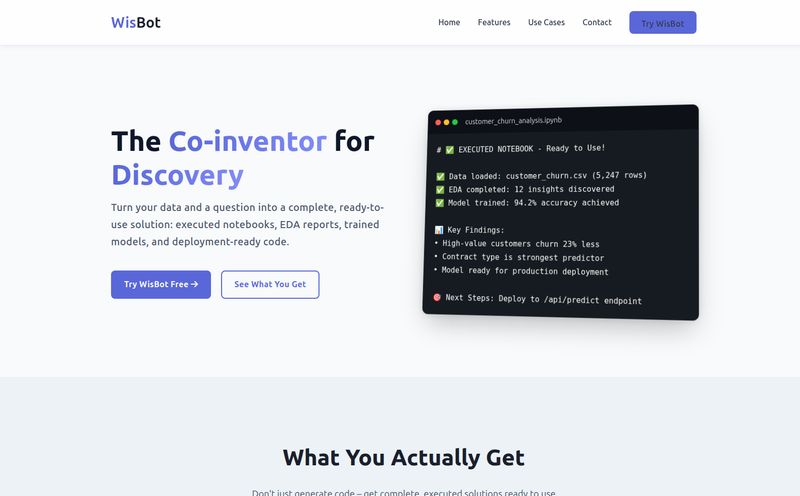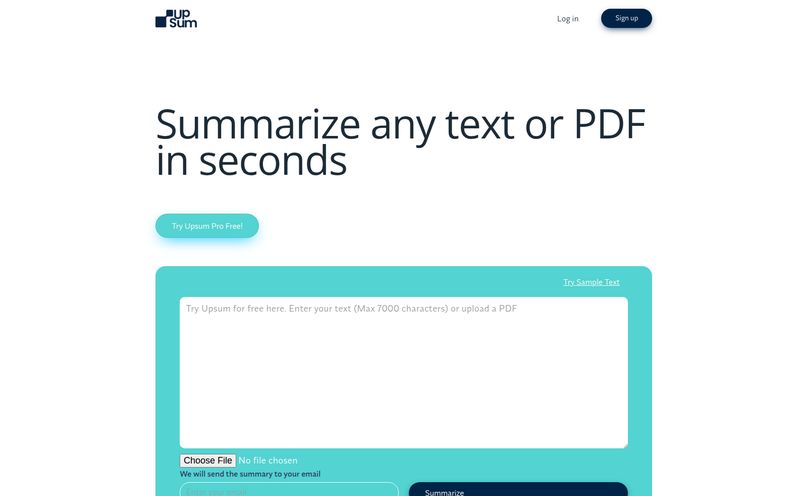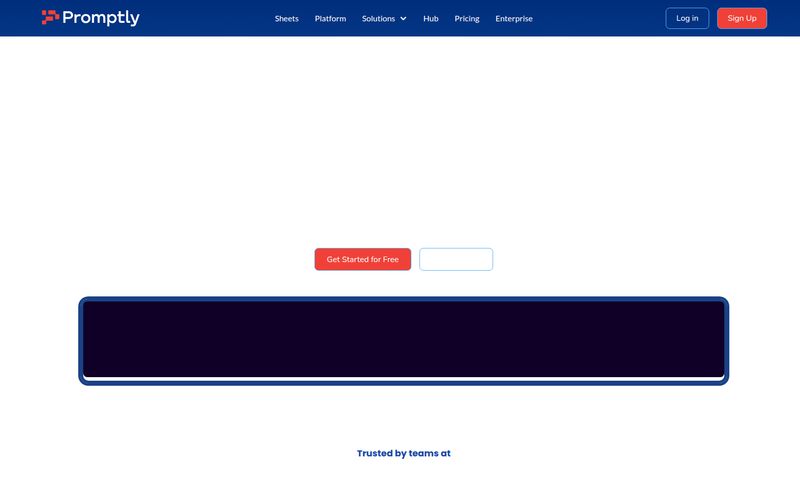I’ve been around the block in the tech world. I saw the frantic shift to the cloud, the mobile-first explosion, and now this… the Great AI Gold Rush of the 2020s. And every single time a new tech wave hits, the same pattern emerges: we build amazing, powerful, world-changing things first, and then we have a collective panic attack about securing them later.
We're smack in the middle of that panic attack phase with AI. We’re plugging Large Language Models (LLMs) into everything from customer service bots to code assistants, but if you ask a CISO how they’re actually securing the models themselves, you often get a nervous cough and a change of subject. It’s the wild west all over again, and most of us are just hoping we don't get hit by a stray prompt injection. That's why when I stumbled upon a platform called Mindgard, my curiosity was definetly piqued.
So, What Exactly is Mindgard?
Let's cut through the marketing-speak. At its core, Mindgard is an automated security guard for your AI models. Think of it as a tireless, hyper-vigilant AI red team that never sleeps, never gets bored, and knows thousands of ways to break into your system. Its entire job is to poke, prod, and attack your AI models—whether they're LLMs like GPT, image generation models, or something multi-modal—to find vulnerabilities before the bad guys do.
It’s not just another firewall or network scanner. Those tools are like putting a strong lock on the front door of your house. Mindgard, on the other hand, is the specialist who checks if a clever intruder can just talk their way past your AI butler, convince it to hand over the keys, and maybe spill all your family secrets in the process. It’s a different kind of security for a different kind of threat.
The AI Security Blind Spot Most Teams Are Missing
For years, our security posture has been built around protecting infrastructure, networks, and applications. We’re good at that. But AI models introduce a whole new attack surface. Traditional tools just aren't built to understand the unique risks of AI, like:
- Prompt Injection: Tricking the AI into ignoring its original instructions.
- Data Poisoning: Corrupting the training data to create a hidden backdoor.
- Model Inversion: Extracting sensitive training data (like PII) from the model's responses.
These are the kinds of attacks that the OWASP Top 10 for LLMs warns us about. Trying to catch these with a legacy Web Application Firewall (WAF) is like trying to catch a mosquito with a fishing net. It’s the wrong tool for the job. This is the exact gap that a platform like Mindgard aims to fill.
Key Features That Caught My Eye
Scrolling through Mindgard’s site, a few things really stood out to me as an old hand in this industry. It’s not just a collection of features, it’s a thoughtfully constructed workflow.
Automated Red Teaming on Steroids
Manual red teaming is awesome. It’s also incredibly expensive, slow, and you can only do it periodically. Mindgard automates this process. It continuously throws attacks at your models, 24/7. This means you’re not just checking for security flaws once a quarter before a big release; you’re checking for them with every single build. That shift from periodic auditing to continuous assurance is a massive leap forward.
The 'Library of Alexandria' for AI Threats
A tool is only as good as its knowledge base. Mindgard claims its AI Threat Library contains thousands of unique attack scenarios. This is the secret sauce. This library is what powers the automated red teaming, giving it a deep well of tricks to draw from. The effectiveness of the whole platform rests on the quality and comprehensiveness of this library, so it's a pretty big flex on their part. If it’s as good as they say, it’s a powerful moat against competitors.

Visit Mindgard
Seamless Integration into Your Workflow
Here’s the part that will make DevOps and MLOps engineers breathe a sigh of relief. Mindgard is designed to integrate directly into CI/CD pipelines and SIEM systems. This is huge. Security tools that live in their own little world and require constant context-switching are tools that, frankly, dont get used. By plugging into the systems developers already use, Mindgard makes security a natural part of the development lifecycle, not an annoying roadblock that everyone tries to drive around.
Who is Mindgard Really For?
Let's be clear, this probably isn't for the hobbyist running a small open-source model on their personal machine. Based on its feature set and the 'Book a Demo' button, Mindgard is squarely aimed at organizations that have real skin in the game. We're talking about:
- Enterprises deploying customer-facing AI applications.
- Tech companies building proprietary AI/ML models.
- Security Teams tasked with governing AI usage across the organization.
- MLOps/DevOps Teams who are responsible for the entire model lifecycle.
If you're in a position where an AI security breach could lead to data loss, reputational damage, or regulatory fines, then you're the person Mindgard is talking to.
The Good, The Bad, and The... Unknown
No tool is perfect, right? From my analysis, here’s my honest take. The advantages are pretty clear: you save an immense amount of time and resources by automating security testing, you get coverage for AI-specific risks that other tools miss, and it fits right into the modern developer workflow. That's a powerful trifecta.
On the flip side, it's not a magic wand. You'll still need some initial setup and configuration to get it humming. And as mentioned, its power is directly tied to its threat library—if a brand new, zero-day AI attack methodology appears, you’re counting on Mindgard to update their library fast. And that brings us to the biggest question mark.
Let's Talk About Pricing (Or the Lack Thereof)
Alright, let’s address the elephant in the server room: the price tag. If you’re looking for a neat little pricing table with tiers named 'Starter,' 'Pro,' and 'Unicorn,' you’re out of luck. The Mindgard website directs you to “Book a Demo.”
In my experience, this nearly always means one thing: Enterprise pricing. This isn't a $50/month SaaS tool. It's a solution that requires a conversation, a custom quote based on your scale, and a dedicated sales cycle. It's not a bad thing—it's just the reality for specialized, high-value B2B platforms. It just means you need to be a serious buyer to find out the cost.
My Final Take: Is Mindgard Worth a Look?
After digging into what Mindgard offers, I'm genuinely optimistic. The problem it's solving is not only real, but it's growing exponentially with every new AI model that gets deployed. The approach of automated, continuous red teaming integrated into the development pipeline is, in my opinion, the only scalable way to tackle AI security.
Is it the definitive answer to all AI security woes? Of course not. But it’s a massive step in the right direction. For any company that's moving beyond just experimenting with AI and into production-grade deployment, putting a tool like Mindgard on your radar isn't just a good idea—it’s a necessity. You wouldn't build a bank without a vault; you shouldn't deploy a powerful AI without a dedicated guardian.
Frequently Asked Questions
What is Mindgard in simple terms?
Mindgard is an automated security testing platform specifically for AI and Machine Learning models. It acts like a continuous 'red team,' constantly trying to find and fix vulnerabilities in your AI systems before attackers can exploit them.
Does Mindgard work with third-party models like GPT-4 or Claude?
Yes, the platform is designed to secure AI throughout its lifecycle, which includes both in-house models you build yourself and third-party models you integrate into your applications via APIs.
Is Mindgard a replacement for our existing security tools?
No, it's a specialized addition. Your firewalls, WAFs, and network scanners are still vital for traditional security. Mindgard complements them by focusing on the unique vulnerabilities and attack surfaces introduced by AI models themselves, which those other tools typically miss.
How is automated red teaming different from a manual one?
Manual red teaming is done by human security experts and is typically a one-time or periodic engagement. Automated red teaming, as done by Mindgard, is a continuous process run by software, allowing for security checks to happen constantly and as part of every code change in a CI/CD pipeline.
What kinds of vulnerabilities does Mindgard look for?
It searches for a wide range of AI-specific flaws, including prompt injection, sensitive data leakage, model denial of service, data poisoning, and other threats outlined in frameworks like the OWASP Top 10 for LLMs.
Who is the ideal user for Mindgard?
The ideal users are organizations that are seriously invested in AI, including MLOps engineers, security professionals (CISOs), and DevOps teams who are responsible for building, deploying, and securing AI models at scale.
Securing the New Frontier
The race to innovate with AI is exhilarating, but the rush can make us reckless. Platforms like Mindgard serve as a crucial reminder that with great power comes great responsibility. Building secure, trustworthy, and robust AI isn't just a technical challenge; it's a foundational requirement for this technology to truly succeed. It seems we're finally getting the tools we need to do it right.



